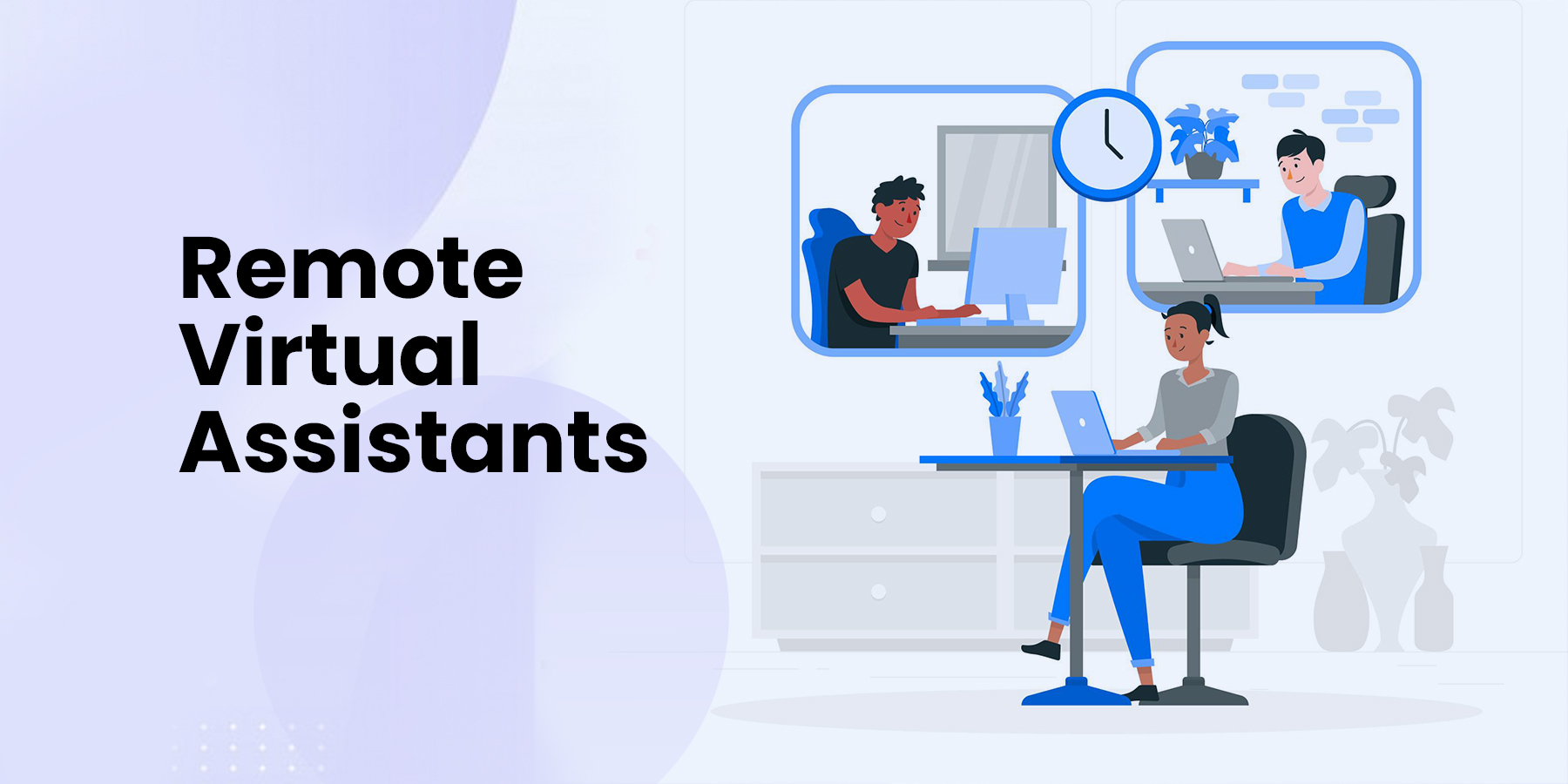6 Best Software Platforms for Virtual Business Management Solutions
Last updated on August 11th, 2025
Running a business today is anything but simple. Between constant communication, endless scheduling, document management, and customer service tasks, it’s easy to feel overwhelmed. That’s where virtual business management solutions come in. And at Vgrow, we’re proud to help our clients cut through that chaos with human-powered services that are both affordable and effective.
We are a virtual solutions company offering 24/7 support across administrative, executive, and customer service roles. Whether you need help with inbox management, appointment setting, bookkeeping, or CRM updates, our trained professionals integrate seamlessly into your workflows. From executive virtual assistant services to customer support VAs, we provide people, not just platforms, so you can get back to focusing on growth.
Below is a quick overview of what makes Vgrow the go-to partner for thousands of growing businesses.
Vgrow
Your Partner in People-Led Virtual Business Management
|
Specifics |
Details |
|
Key Services |
Administrative support, executive virtual assistant services, ecommerce customer support, inbound/outbound calling, data entry, and scheduling. |
|
Industries Served |
E-commerce, healthcare, real estate, legal, SaaS, coaching, agencies, and small-to-mid-sized businesses across industries. |
|
Hiring Models |
Hourly, part-time, full-time, and project-based remote virtual assistant support |
|
Specializations |
Inbox/calendar management, CRM updates, lead follow-ups, research, Shopify/WooCommerce support, and back-office assistance. |
|
Locations Served |
USA, Canada, UK, Australia, UAE, and globally |
|
Contact Details |
📧 info@vgrow.co 📞 +1 332-223-8085 🏢 Offices in USA, India, and the Philippines |
Over the years, I’ve worked with dozens of platforms that support virtual teams. Some stand out more than others. In this blog, I’ll share the software I believe are the best platforms for virtual business management solutions in 2025, tools that help businesses thrive, whether they hire virtual assistants, rely on their in-house team, or use a mix of human and AI-assisted tools.
Let me walk you through the solutions that make remote operations smoother, more efficient, and less overwhelming.
Table of Contents
What Is Virtual Business Management?
The Human + AI Advantage in Remote Business Ops
Frequently Asked Questions (FAQs)
What Is Virtual Business Management?
Virtual business management in 2025 refers to the seamless execution of day-to-day business functions, from customer support to administrative tasks, handled remotely. It includes:
- Operational support
- CRM handling
- Invoicing and data entry
- Executive calendar/inbox management
- Live chat and help desk support
Key roles include:
- Customer support VAs
- Executive virtual assistants
- AI-powered assistants for scheduling and reminders
Unlike traditional outsourcing, this model is built for flexibility, scalability, and full integration with modern tools and platforms.
The Human + AI Advantage in Remote Business Ops
Smart systems help, but people make it work. Virtual assistant services combined with software platforms create a powerful blend. Here’s how:
- AI tools like calendar bots can suggest meeting slots
- Human VAs confirm, follow up, and personalize communication
- AI auto-fills help desk responses
- Human agents resolve complex tickets with empathy and context
With Vgrow, you get that perfect balance. AI-enhanced tools speed up processes, while our trained VAs ensure your brand remains human.
1. ClickUp: All-in-One Task and Workflow Management
When it comes to managing tasks, setting up recurring processes, and staying on top of deadlines, ClickUp is my go-to recommendation. It combines the functionality of Trello, Asana, and even Google Docs into a single, powerful platform.
What I love about ClickUp:
- Custom task statuses and workflow templates
- Time tracking and goal-setting features
- Built-in chat and document sharing
- Compatible with both freelancers and larger virtual teams
One of our clients, a real estate firm in California, used to rely on scattered spreadsheets and email threads for managing listings and appointments. After we helped them implement ClickUp and assigned one of our 24/7 virtual assistants, productivity jumped by 35%, and missed follow-ups became nearly nonexistent. While ClickUp does have smart automation and even AI Assistant Online features, the real magic happened when our VA kept things moving behind the scenes.
2. Slack: Real-Time Team Communication
Slack isn’t new, but it’s still one of the best platforms out there for virtual business management. Especially for businesses that hire part-time VAs or remote contractors, Slack keeps everyone aligned without overwhelming your inbox.
Here’s why I think Slack is essential:
- Channel-based communication for projects or departments
- Easy file sharing and integration with Google Drive, Zoom, and more
- Voice and video call capabilities for quick check-ins
- Support for time zone tagging and message scheduling
A fast-growing eCommerce brand we work with needed a better way to communicate with their VA team across India and the Philippines. After centralizing all comms in Slack and pairing it with one of our customer service virtual assistants, resolution time for inquiries decreased by 50%. While Slack now integrates some AI chatbot functionality, we’ve found that having a live assistant there to respond in real time creates a more engaging, reliable experience.
3. Zoho One: The All-Rounder for Business Apps
Zoho One is like a business-in-a-box. From email and CRM to HR and finance, it gives you over 45 apps under one login. I recommend it for businesses that want affordable virtual assistant services combined with an integrated software stack.
Best features:
- Zoho CRM for customer management
- Zoho Books for invoices and payments
- Zoho Mail for professional communication
- Built-in automation and reporting
We helped a consultancy firm implement Zoho One alongside our executive virtual assistant services. Their VA handled appointment setting, invoice follow-ups, and client onboarding, all within one platform. With features like AI Virtual Assistant suggestions, the software offered smart nudges, but the human VA ensured nothing fell through the cracks.
4. Google Workspace: Still a Must-Have
Simple, flexible, and universal, Google Workspace (formerly G Suite) remains the backbone of virtual team collaboration. From Docs and Sheets to Calendar and Drive, it’s hard to beat for real-time collaboration.
Why it still works:
- Easy sharing and editing of documents
- Seamless meeting scheduling with Google Calendar
- Intuitive access control and user management
- Mobile access and offline editing
We recently onboarded a startup CEO who needed someone to manage their overflowing inbox and calendar. After hiring one of our 24/7 VAs, and using Google Workspace to collaborate, they went from 500+ unread emails to inbox zero in just two weeks. While Gmail does have AI-powered virtual assistant tools like auto-reply and smart scheduling, pairing it with a skilled human is what made the real difference.
5. HubSpot: CRM and Customer Engagement Hub
HubSpot is my personal favorite for businesses that rely on customer nurturing. It’s not just a CRM, it’s a sales, marketing, and customer service engine all rolled into one.
Why it’s perfect for virtual business management:
- Centralized contact database
- Email and social media automation
- Live chat and help desk functions
- Strong reporting and lead tracking
We support an online coaching platform that uses HubSpot and outsources their ecommerce call center needs to us. Our virtual assistants help with chat, email responses, and lead follow-ups, keeping customer engagement high while the team focuses on content. While HubSpot offers AI-driven customer support tools, we’ve seen the best results when humans stay in the loop.
6. Calendly: Simple Scheduling for Busy People
Scheduling calls shouldn’t require 15 back-and-forth emails. That’s why Calendly is a must for anyone using virtual assistant services near me or abroad.
Why it works:
- Easy integration with Google or Outlook calendar
- Set working hours, meeting types, and buffers
- Custom branding and reminders
- Round-robin scheduling for teams
A tech consultant we work with needed help booking demo calls with prospects across three time zones. By using Calendly and pairing them with one of our AI virtual assistant for scheduling trained VAs, bookings doubled, and no-shows dropped thanks to timely reminders. AI can suggest optimal slots, but our VA ensured every lead was followed up properly.
Real-Life Case Study: Scaling with Virtual Support + Smart Tools
One of our long-term clients, a U.S.-based Shopify merchant, came to us during a period of rapid growth. They needed help with order tracking, customer communication, and day-to-day admin but weren’t ready to build a full in-house team.
We provided:
- A customer service virtual assistant for handling returns and FAQs
- An executive VA for inbox and calendar management
- Set them up with Slack, Zoho, and Calendly to streamline operations
Within three months:
- Customer complaint resolution time dropped by 40%
- Daily admin time saved: 5+ hours
- Order accuracy improved with better documentation
They explored AI virtual assistant options but stuck with us because our outsource virtual assistant services provided more flexibility, context, and brand consistency.
How to Choose the Right Software + Support Mix
|
Key Question |
What to Consider |
|
What’s your biggest bottleneck? |
Admin, support, or scheduling tasks slowing you down? |
|
Do you already use any platforms? |
Consider what tools you’re currently paying for or using inconsistently. |
|
Do you need an all-in-one suite or specialized tools? |
Choose between broad platforms like Zoho or focused tools like Calendly and Slack. |
|
Do you want AI, human support, or a hybrid? |
Define your preference for automation vs. personalized assistance. |
Pro Tip: Start small. Try 1 VA + 1–2 core tools that match your daily needs.
Frequently Asked Questions (FAQs)
1. What is a customer support virtual assistant?
A trained remote worker who manages help desk tickets, chats, or inbound support, without needing to be onsite.
2. What is meant by virtual customer support?
Customer service delivered remotely using digital tools like chat, email, or CRM systems, often handled by VAs.
3. What is CSR VA?
A customer service representative virtual assistant (CSR VA) who supports clients via live chat, calls, or emails remotely.
4. What are some customer service tasks?
Common tasks include order updates, responding to inquiries, ticket handling, refunds, CRM updates, and live chat monitoring.
Key Takeaways
In wrapping up our exploration of the best software platforms for virtual business management, it’s clear that the right mix of tools and human support unlocks real growth. Here are three streamlined takeaways:
- Simplify Operations: Platforms like ClickUp, Zoho, and Google Workspace keep your workflows centralized and easy to manage.
- Leverage People + Tech: Combine the speed of AI-powered tools with the adaptability of human virtual assistants for better results.
- Start Smart and Scale: Even a few hours of dedicated support from the right VA using smart platforms can free up your time and reduce errors.
We’ve seen firsthand how these platforms, paired with experienced VAs, transform overwhelmed founders into efficient business leaders.
To stay up-to-date with the latest virtual support tips and tools, follow us on Facebook, Instagram, and LinkedIn.
Suggested Read:
If you found this guide helpful, you may also enjoy diving deeper into the evolving world of virtual assistants, security, and AI-driven support. Here are a few handpicked resources that expand on the themes of this article:
- Can Meta’s AI Virtual Assistant Meet Your Needs? Evaluating Its Capabilities – Explore the strengths and limitations of Meta’s AI assistant for remote work scenarios.
- How a Remote Research Assistant Can Solve Your Data Management Challenges – Discover how remote VAs streamline data handling, analysis, and reporting.
- Is Hiring a Remote VA the Smartest Move for Ecommerce Scaling? – Learn how virtual assistants can drive ecommerce growth while reducing operational strain.
- Is Your Remote VA Secure with Zero Trust Security? – Understand the importance of data protection and security models when working with remote assistants.
Need Scalable Virtual Support for Your Business?
Hire trained virtual assistants for customer service, scheduling, and admin support, starting at just $7/hour.
Get a Free VA Strategy Session




